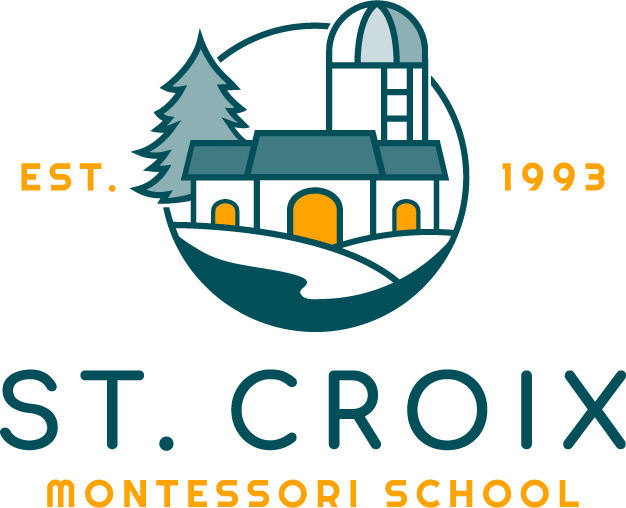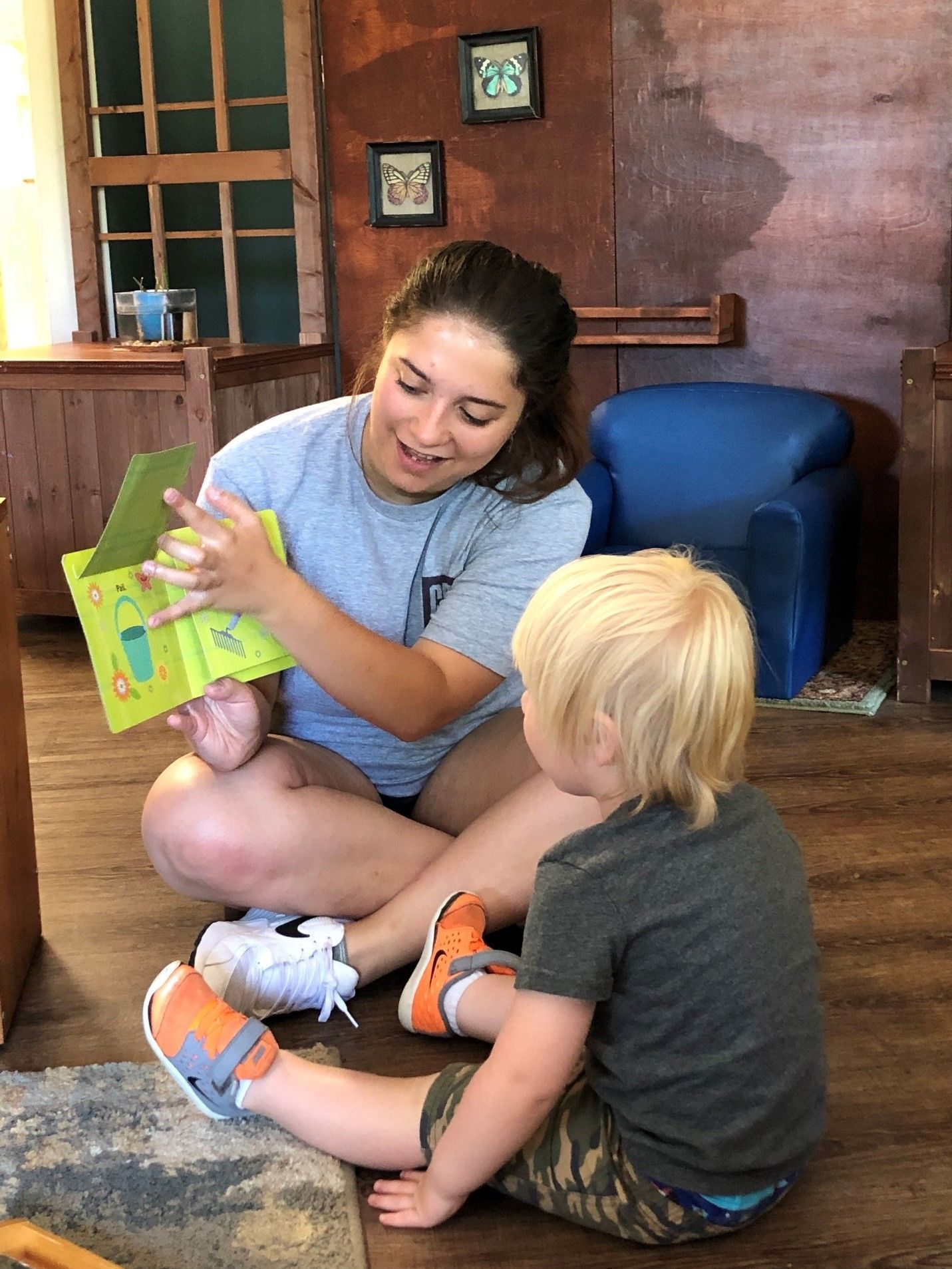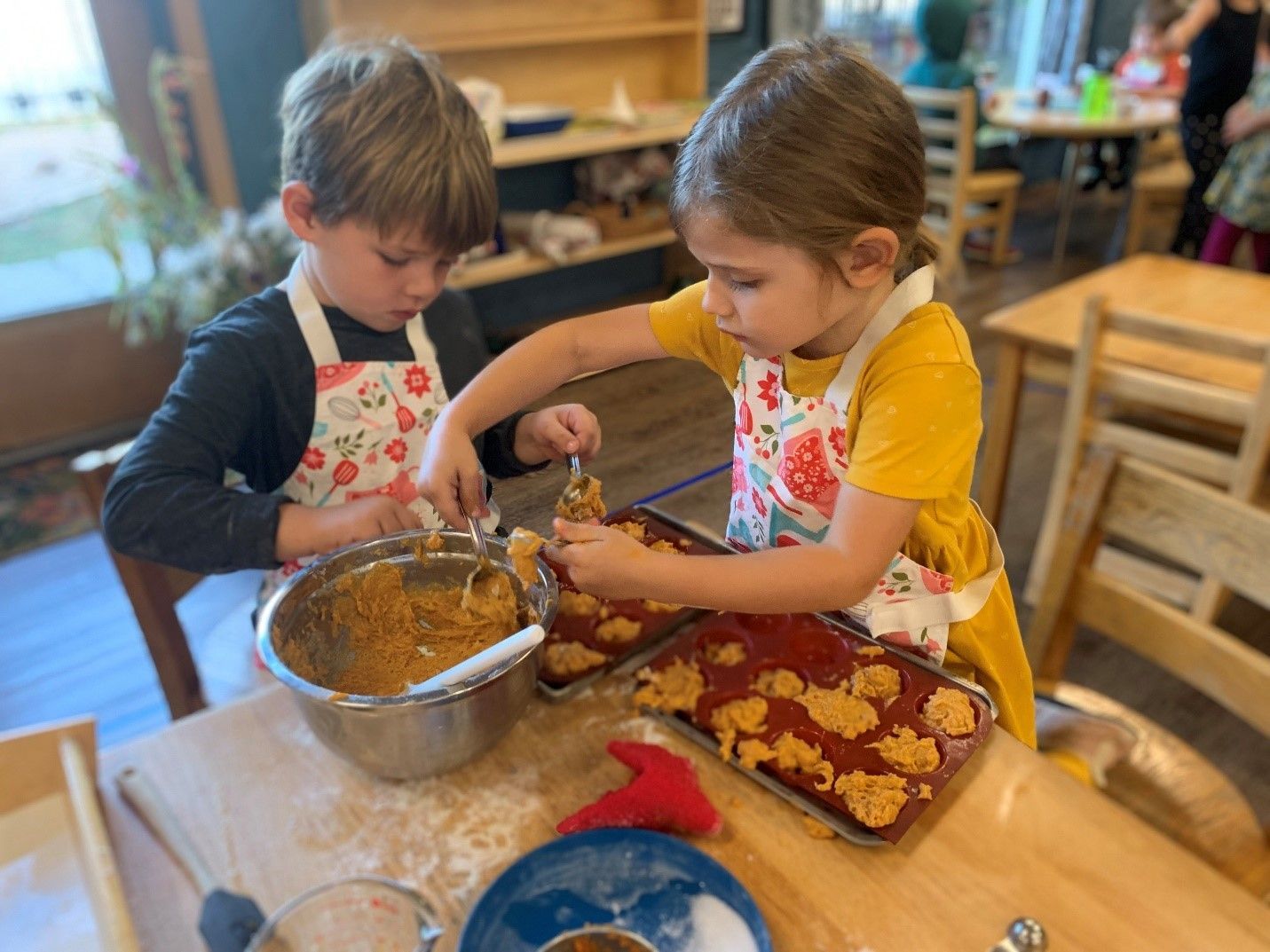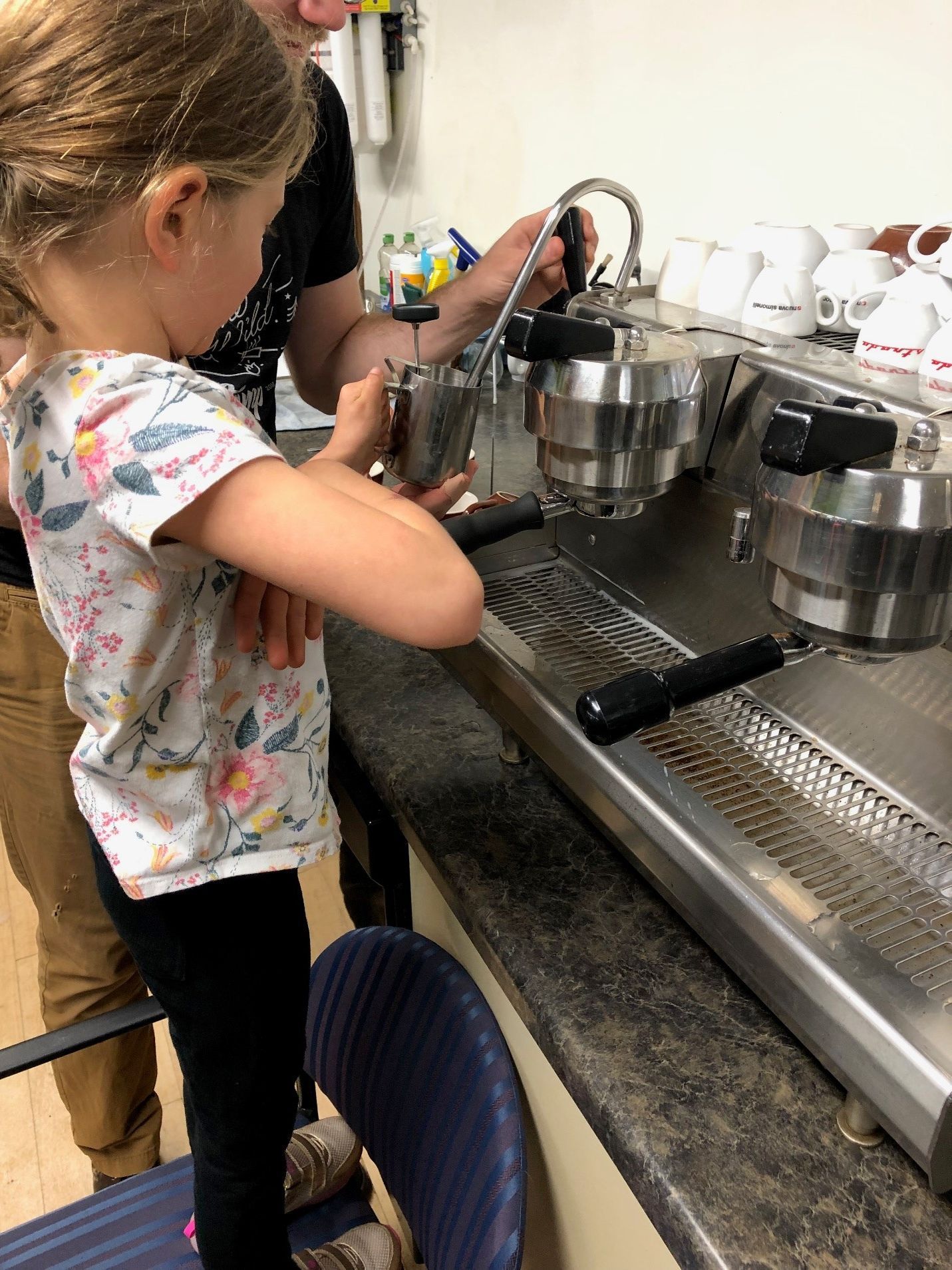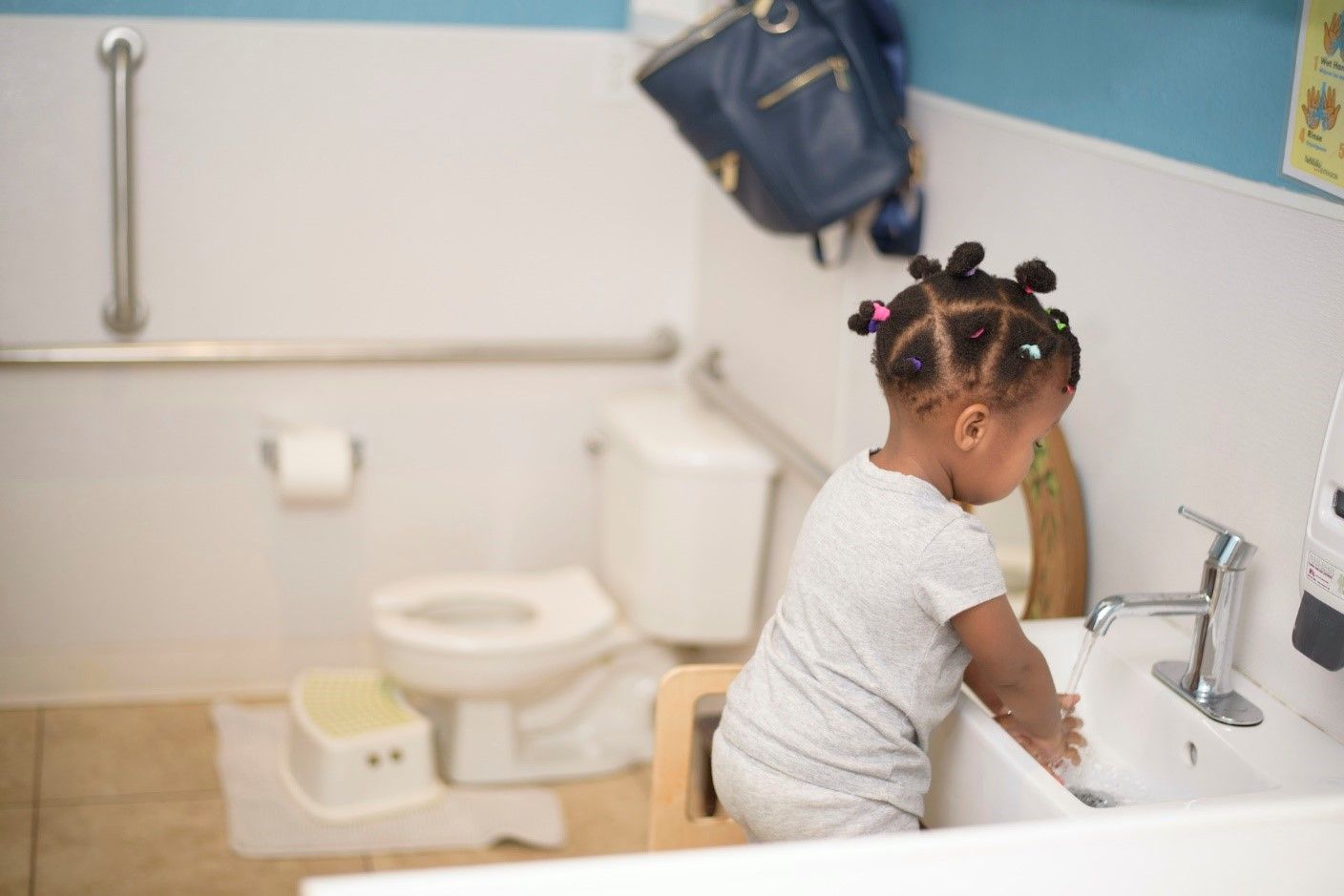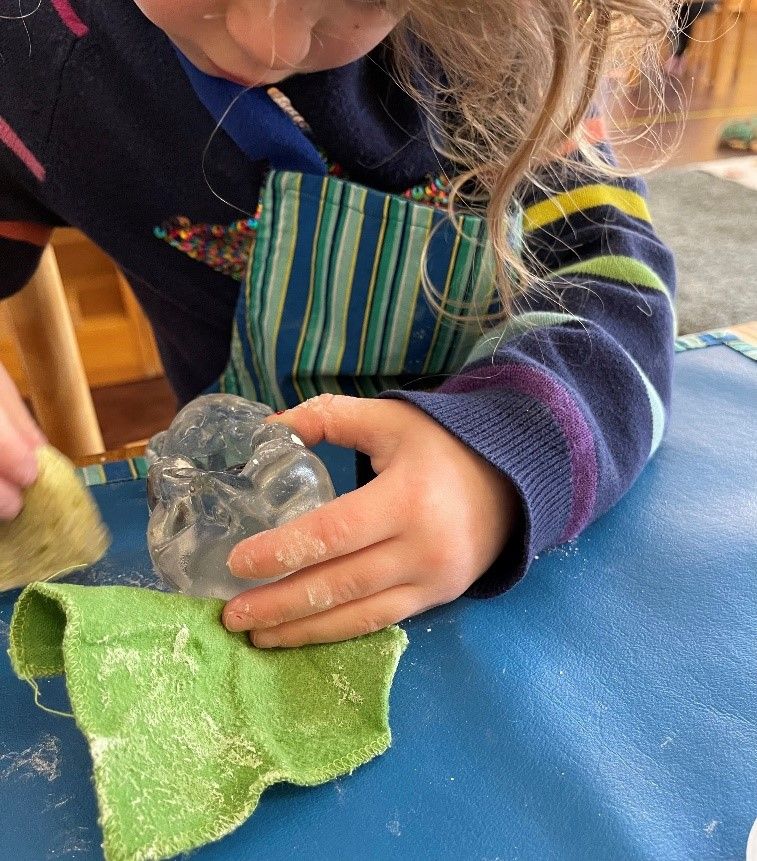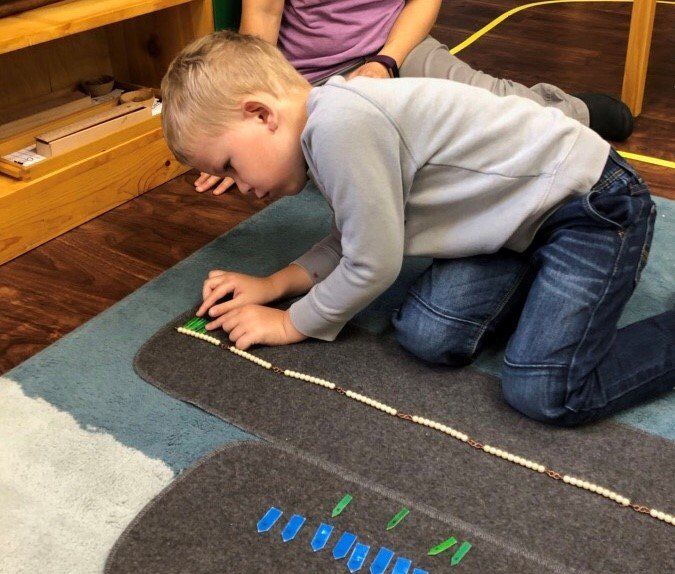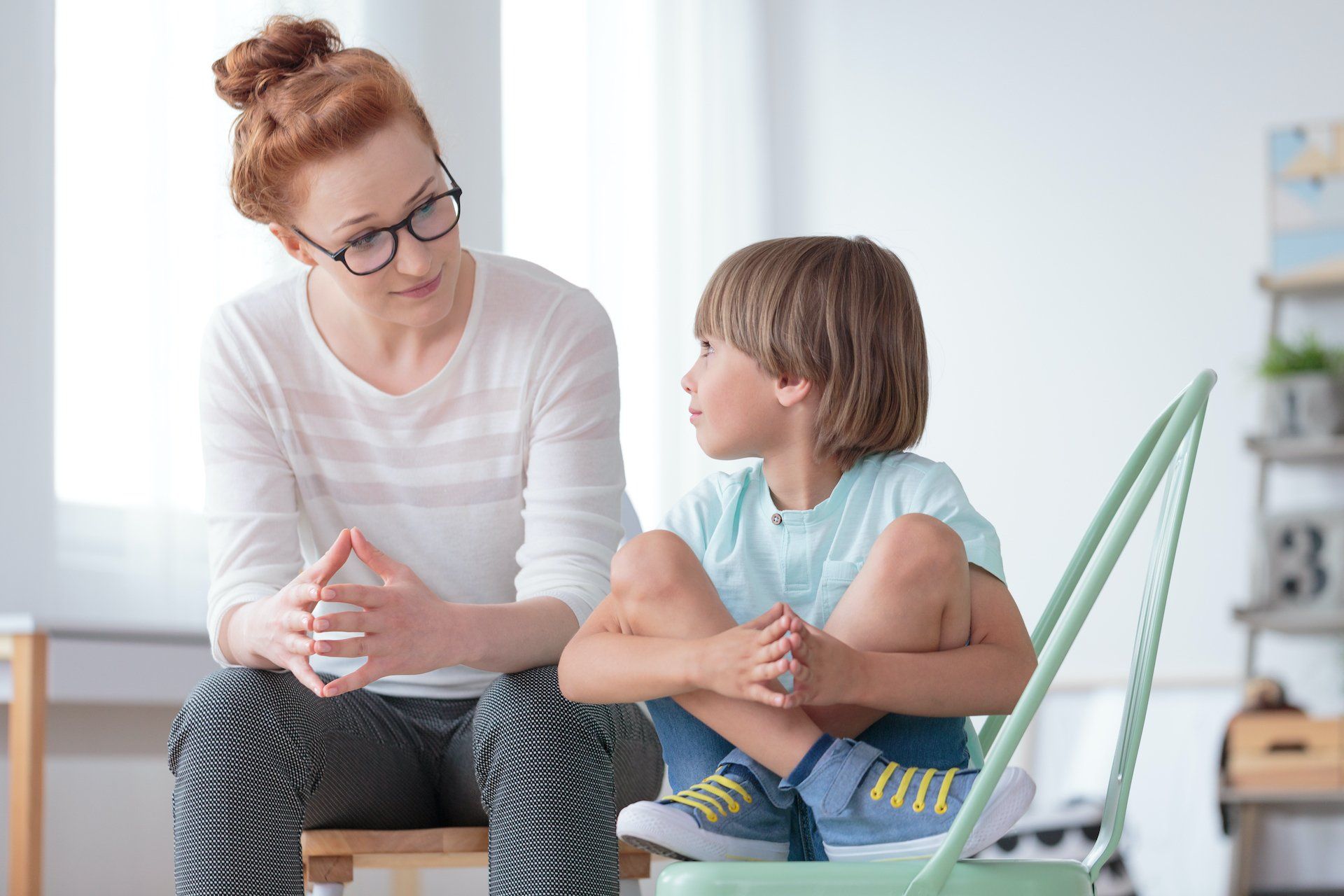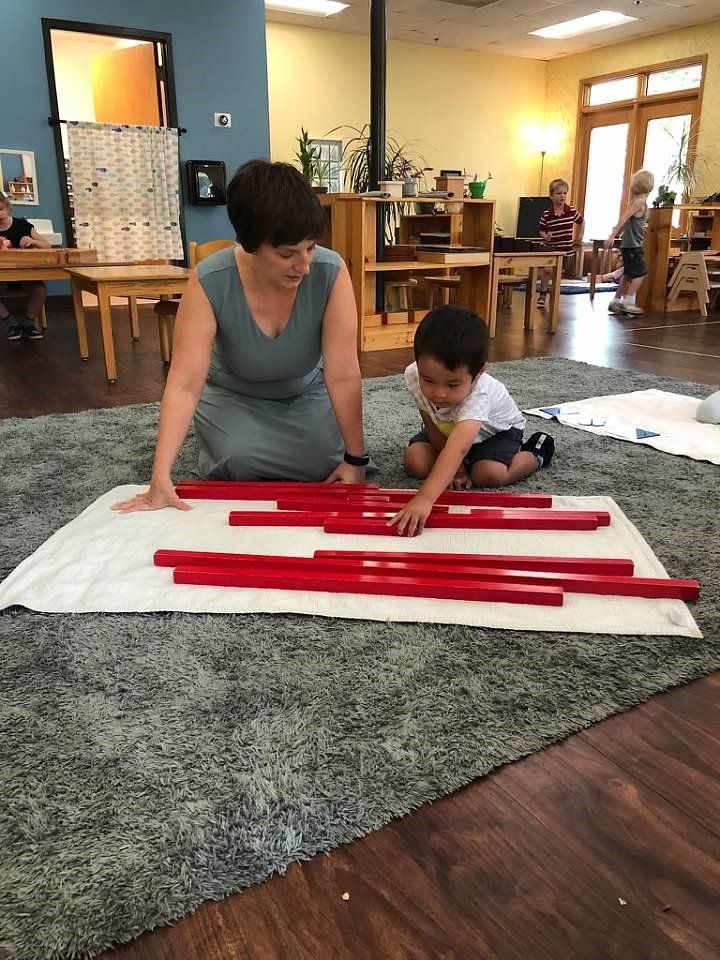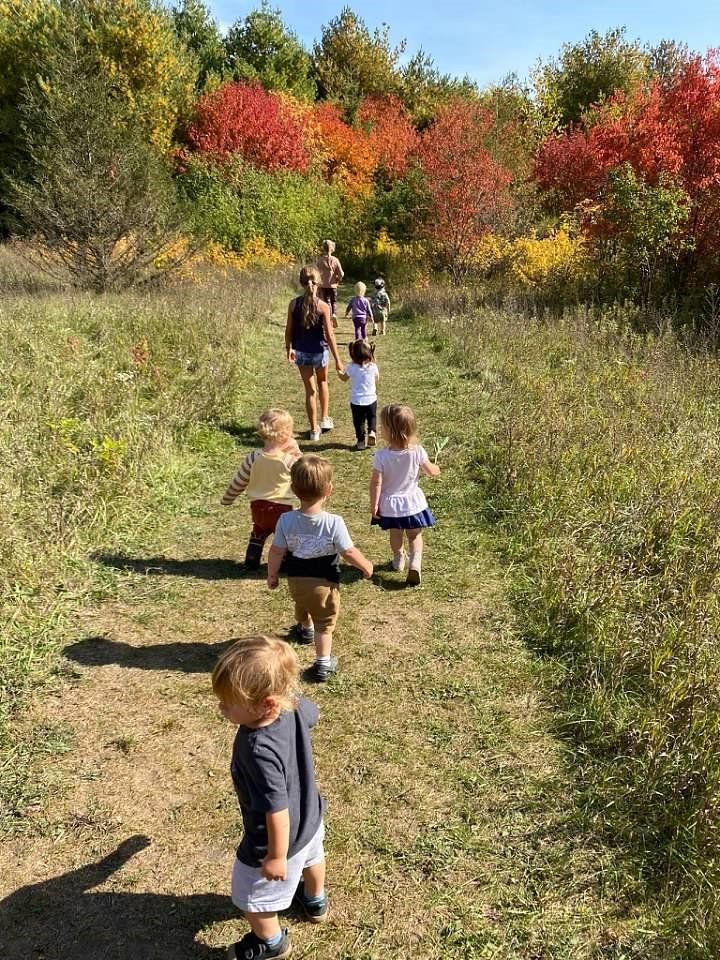Blog Layout
New Class? Here’s What to Expect
St. Croix Montessori School • September 10, 2021
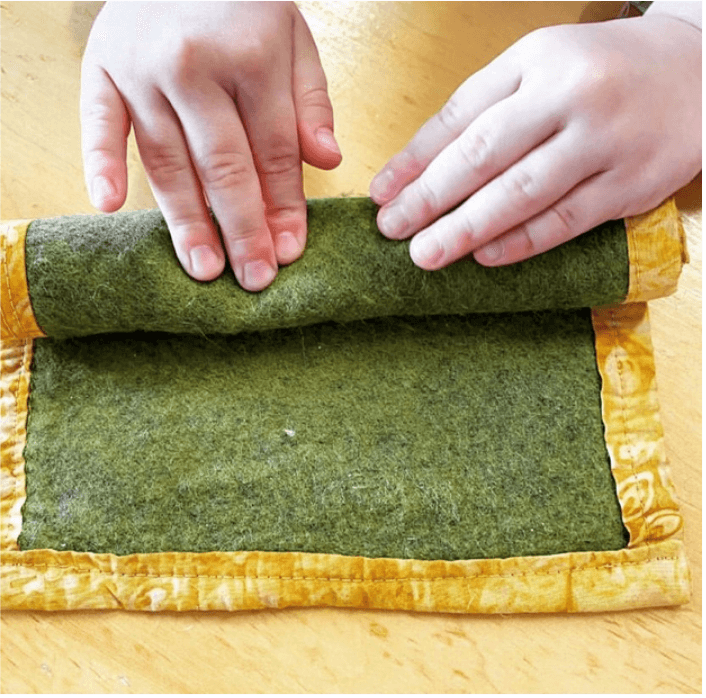
Welcome! Whether your family has been part of our community for years or you’re just joining us for the first time, we look forward to spending the school year together. After the past year and a half, everyone is looking forward to a fresh start, with a return to some semblance of normalcy.
Some children will be Montessori students for the very first time. Others are moving up to a new level. Either way, it’s helpful to know what’s coming, and to have a little information regarding what to expect. Scan through the headings below to find which section or sections apply to your child.
If you’re brand-new to Montessori
During the application process and through your own personal research, you’ve probably learned a bit about what makes Montessori schools different from more conventional settings. The journey you find yourself beginning will be awe-inspiring, as many seasoned Montessori parents will tell you.
Montessori education has been around for more than a century, and so much of what we do is grounded in what works and what has worked for generations. Still, as a rule, educators are curious people who never stop learning. We are always seeking out new ways to make the experience more enriching for the children in our care. We observe, we ask questions, and we try out different methods that have worked well for others.
We encourage you to try the same. There is so much to learn about this amazing educational approach, that it can’t possibly be done all at once. This blog is a great place to check in and read helpful information. Your child’s guide, as well as other Montessori parents are excellent resources to turn to. As a school, we do our best to facilitate community building events as well as parent education offerings that will help answer your questions - although this type of learning usually leads to even more curiosity!
Thank you for joining us. We are so glad to have you with us.
New to Toddler?
The toddler community exists to support the abilities of the very young child. “Help me to do it myself” is what the 16–33-month-old child is saying to us when she refuses help and insists on struggling to complete the task. Our goal is to assist the child in this natural desire for independence.
The classroom is a prepared environment designed to support the child’s need for purposeful activity. It is an environment in which everything is selected to fit the child is size; art is hung at eye level, the sink and toilet are child size to provide him with opportunities for independence, and materials are selected with beauty and functionality in mind to entice the child. The atmosphere is supportive, aesthetically pleasing and child centered.
The classroom provides many opportunities for children to take part in maintaining the environment. Care of plants, wiping up spills, scrubbing tables and setting them for dining are all examples of the work that is offered.
New to Children’s House?
Montessori Children’s House classrooms are special places. This is, after all, where it all began with the opening of the first Casa dei Bambini in Rome in 1907. Just how is this setting any different than other preschools or kindergarten classes?
Right away you will notice the emphasis on personal independence. Even our youngest children walk to their classroom by themselves, remove and hang their coat by themselves, and change their shoes by themselves. You’ll notice the work continues in subtle ways as their teacher meets them at the door, makes eye contact, greets them warmly and intentionally, and guides them to do the same.
In the classroom, your child will be free to explore and learn on their own terms. Many adults are surprised this does not translate into children running wildly around the room. The reason is that the freedom we offer is bound within carefully constructed limits. Yes, a child may choose their preferred work from the shelves, but we only put out work that we want them to be doing. Yes, they may stop to have a snack whenever their body tells them it’s time, but they are taught to clean their own crumbs and wash their own dishes.
Some new-to-Montessori families wonder what we do if a child wants to focus on the same work or area of the classroom over and over again. Short answer: we let them. Our belief, which has been confirmed countless times with experience, is that if a child is repeatedly drawn to something it’s because they have something important to learn from it. Once they have exhausted that need, they will eventually move on. We have learned to remove our own expectations of how long it should take or what trajectory an individual’s learning should follow.
One important Montessori mantra to keep in mind: follow the child. We let this guide so much of what we do, and it leads to amazing results.
New to elementary?
There is a definite shift in children around age six, which is why Dr. Montessori determined this to be the beginning of the second plane of development. You will notice your child is suddenly more imaginative, social with their peers, physically a bit clumsy, and so very eager to learn everything they can about the world (and universe) around them.
● Lessons are more often given in small groups (as opposed to individually when children are younger).
● Learning and work is based on teaching important basic math and literacy skills as well as a globally-focused foundation in science, geography, and history.
● The classroom is arranged so that children may work together with their peers.
● New expectations are established to ensure that children are engaging with academic content in all areas. Teachers meet and converse with students to share tools, strategies, and give suggestions to help them achieve goals.
● We give children BIG work, which is what they crave. Projects stretch out over days and weeks, and materials stretch across the classroom floor.
Sometime during the upper elementary years (4th – 6th grade), your child will begin to stop using the gorgeous wooden Montessori materials. This is because after years of work, they have made their way to abstract learning. They no longer need concrete items to manipulate with their hands in order to understand concepts. This isn’t to say they never do anything hands-on, it just starts to look a bit different.
Upper elementary children have also had a few years to navigate social structures with their peers. They have had practice forming friendships and working through conflict. They have a better sense of who they are and how to interact with others. This brings a new sense of calm that was not seen when they were younger.
Questions? Comments? We’d love to hear from you. Please feel free to reach out with your thoughts.
Some children will be Montessori students for the very first time. Others are moving up to a new level. Either way, it’s helpful to know what’s coming, and to have a little information regarding what to expect. Scan through the headings below to find which section or sections apply to your child.
If you’re brand-new to Montessori
During the application process and through your own personal research, you’ve probably learned a bit about what makes Montessori schools different from more conventional settings. The journey you find yourself beginning will be awe-inspiring, as many seasoned Montessori parents will tell you.
Montessori education has been around for more than a century, and so much of what we do is grounded in what works and what has worked for generations. Still, as a rule, educators are curious people who never stop learning. We are always seeking out new ways to make the experience more enriching for the children in our care. We observe, we ask questions, and we try out different methods that have worked well for others.
We encourage you to try the same. There is so much to learn about this amazing educational approach, that it can’t possibly be done all at once. This blog is a great place to check in and read helpful information. Your child’s guide, as well as other Montessori parents are excellent resources to turn to. As a school, we do our best to facilitate community building events as well as parent education offerings that will help answer your questions - although this type of learning usually leads to even more curiosity!
Thank you for joining us. We are so glad to have you with us.
New to Toddler?
The toddler community exists to support the abilities of the very young child. “Help me to do it myself” is what the 16–33-month-old child is saying to us when she refuses help and insists on struggling to complete the task. Our goal is to assist the child in this natural desire for independence.
The classroom is a prepared environment designed to support the child’s need for purposeful activity. It is an environment in which everything is selected to fit the child is size; art is hung at eye level, the sink and toilet are child size to provide him with opportunities for independence, and materials are selected with beauty and functionality in mind to entice the child. The atmosphere is supportive, aesthetically pleasing and child centered.
The classroom provides many opportunities for children to take part in maintaining the environment. Care of plants, wiping up spills, scrubbing tables and setting them for dining are all examples of the work that is offered.
New to Children’s House?
Montessori Children’s House classrooms are special places. This is, after all, where it all began with the opening of the first Casa dei Bambini in Rome in 1907. Just how is this setting any different than other preschools or kindergarten classes?
Right away you will notice the emphasis on personal independence. Even our youngest children walk to their classroom by themselves, remove and hang their coat by themselves, and change their shoes by themselves. You’ll notice the work continues in subtle ways as their teacher meets them at the door, makes eye contact, greets them warmly and intentionally, and guides them to do the same.
In the classroom, your child will be free to explore and learn on their own terms. Many adults are surprised this does not translate into children running wildly around the room. The reason is that the freedom we offer is bound within carefully constructed limits. Yes, a child may choose their preferred work from the shelves, but we only put out work that we want them to be doing. Yes, they may stop to have a snack whenever their body tells them it’s time, but they are taught to clean their own crumbs and wash their own dishes.
Some new-to-Montessori families wonder what we do if a child wants to focus on the same work or area of the classroom over and over again. Short answer: we let them. Our belief, which has been confirmed countless times with experience, is that if a child is repeatedly drawn to something it’s because they have something important to learn from it. Once they have exhausted that need, they will eventually move on. We have learned to remove our own expectations of how long it should take or what trajectory an individual’s learning should follow.
One important Montessori mantra to keep in mind: follow the child. We let this guide so much of what we do, and it leads to amazing results.
New to elementary?
There is a definite shift in children around age six, which is why Dr. Montessori determined this to be the beginning of the second plane of development. You will notice your child is suddenly more imaginative, social with their peers, physically a bit clumsy, and so very eager to learn everything they can about the world (and universe) around them.
So, we keep all these things in mind in the lower elementary environment. Some highlights:
● Learning and work is based on teaching important basic math and literacy skills as well as a globally-focused foundation in science, geography, and history.
● The classroom is arranged so that children may work together with their peers.
● New expectations are established to ensure that children are engaging with academic content in all areas. Teachers meet and converse with students to share tools, strategies, and give suggestions to help them achieve goals.
● We give children BIG work, which is what they crave. Projects stretch out over days and weeks, and materials stretch across the classroom floor.
Sometime during the upper elementary years (4th – 6th grade), your child will begin to stop using the gorgeous wooden Montessori materials. This is because after years of work, they have made their way to abstract learning. They no longer need concrete items to manipulate with their hands in order to understand concepts. This isn’t to say they never do anything hands-on, it just starts to look a bit different.
Upper elementary children have also had a few years to navigate social structures with their peers. They have had practice forming friendships and working through conflict. They have a better sense of who they are and how to interact with others. This brings a new sense of calm that was not seen when they were younger.
Questions? Comments? We’d love to hear from you. Please feel free to reach out with your thoughts.
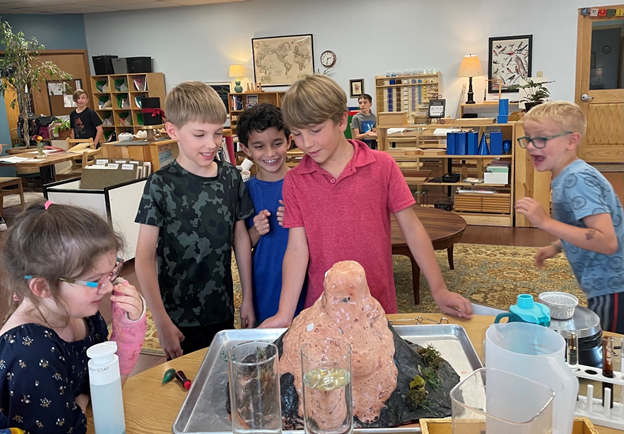
By St. Croix Montessori School
•
October 10, 2022
When children enter a Montessori elementary classroom around age six, they have undergone a great transformation. Whereas they previously wanted and needed to explore their immediate environment on a sensorial level, now they want and need to explore by using their intellect and imagination. The study of geography takes on a whole new meaning at this age when children are fascinated by the smallest particles and the largest stars. They want to know why the seasons differ in the Northern and Southern Hemispheres. They are curious about what made the Grand Canyon. They want to know why ocean currents affect the weather. This desire to know why propels children to discover relationships and functions, not just learn facts. They are also fascinated by the extreme and the outstanding. They are drawn to the very large and the very small. They ask Why? What for? How is this related? The Universe Elementary-age children have a consuming interest in everything! To cater to this all-embracing thirst for the reasons of everything, we begin with the universe. One of the earliest lessons we introduce is the story of the universe. From this first story, children are delighted by a myriad of lessons and activities which fall under the general heading of ‘geography.' Beginning with the universe gives elementary children a big-picture context. In Montessori, rather than encountering bits of disconnected knowledge, children learn about the order and harmony of the universe, as well as the relationships that exist between all things. “If the idea of the universe be presented to the child in the right way, it will do more for him than just arouse his interest, for it will create in him admiration and wonder, a feeling loftier than any interest and more satisfying. The child's mind then will become fixed and can work. The knowledge he then acquires is organized and systematic; his intelligence becomes whole and complete because of the vision of the whole that has been presented to him and his interest spreads to all, for all are linked and have their place in the universe on which his mind is centered.” — Dr. Maria Montessori, To Educate the Human Potential. Constructing Understanding Dr. Montessori observed that children around the world tended to ask similar questions at this age. The geography presentations and lessons support these fundamental reoccurring questions. Our goal is to help elementary children have an explosion into understanding. However, this kind of understanding does not come from adults explaining everything. Instead, we give children experiences and just enough information so they can find out more and make associations. When children make their own connections, real and lasting understanding happens. Even better, the children respond with enthusiasm and excitement! Geography Topics Children in a Montessori classroom do not encounter subjects grouped under curricular headings. Subjects are integrated because children are building their minds. They are exploring their world, rather than the chapters of a textbook. Although there is a structure in the classroom environment, children have the opportunity to explore different many different aspects of geography including: Space, Earth, and the Universe Composition of the Earth Nature of the Elements Sun and Earth Work of Air Work of Water Life on the Land Interdependencies Economic Geography The lessons we present, and the resulting children’s explorations, lead into astronomy, physics, chemistry, meteorology, geology, and more. For example, as we look more closely at how the earth revolves around the sun, children learn about solstices and seasons, climatic zones, and flora and fauna found in particular regions. Aids to Understanding For each topic, we provide imaginative aids, often in the form of stories, colorful impressive charts, and a variety of experiments. Many of these instructive aids have been selected to provide impressions, not just facts. The aim of our geography presentations is to intrigue the children and spark their imagination. We want them to be inspired to find out more! We concentrate on giving key information, discussing reasons, and illustrating details, all of which draw children’s attention to certain phenomena. Once interest is there, children want to learn as much as they can. It is as if we are giving elementary students keys to knowledge and understanding. Once they have the keys, they can open doors and continue their explorations. Geography is a vibrant aspect of the Montessori elementary and generates spontaneous, active, self-renewing interest! A love of learning blossoms in the children, and many develop a lifelong fascination with elements of geography. We invite you to visit our school to learn more about our Montessori approach to Elementary Education.
PROGRAMS
© 2025
St. Croix Montessori School
© 2025
Nido Montessori School
